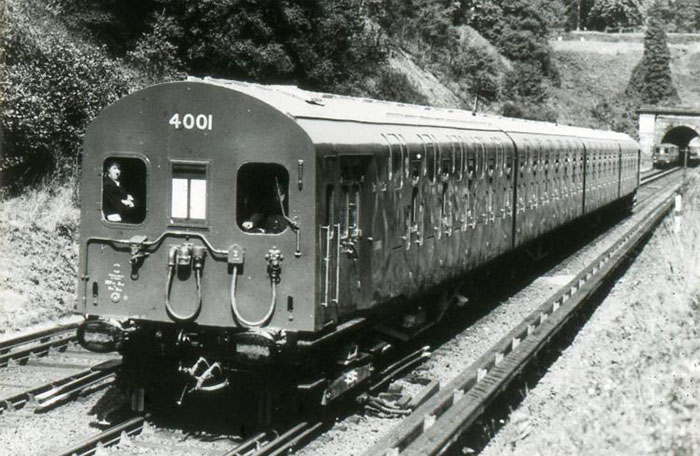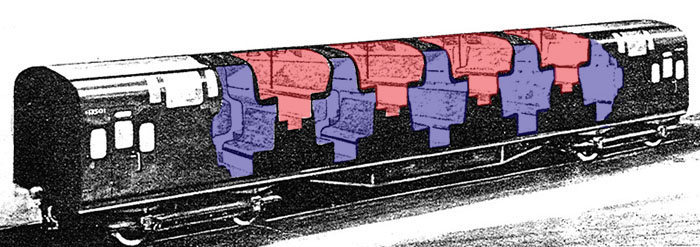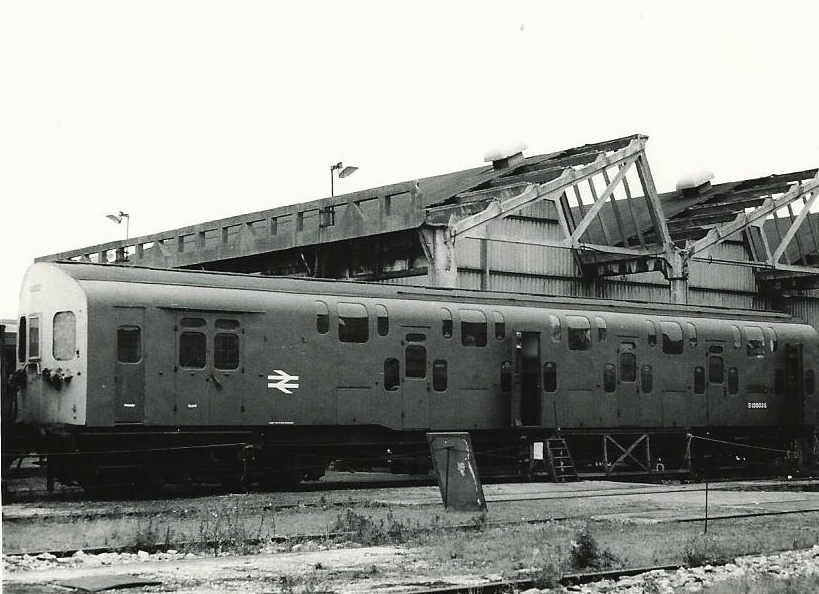

 STUART JORDAN looks into the only doubledecker train to run on the UK network.
STUART JORDAN looks into the only doubledecker train to run on the UK network.
Double-decked coaches are commonplace across the railways of North America and Continental Europe. However, only one type of such a train has ever run on the British railway network.

These were the Southern Railways 4-DD (four-car double-deck) EMUs, designed by the great Chief Mechanical Engineer of Southern, OVS Bulleid. The post-war boom in passenger traffic led to overcrowding on many routes, specifically Dartford to Charing Cross. Bulleid's aim was to produce a train that could increase capacity without requiring longer trains. Longer trains meant longer platforms which would cost time and money, so a shorter-term solution was required. Since the dawn of the railways, locomotives, coaches, and wagons had increased in size, but were restricted by the loading gauge of early rolling stock. Bridges, tunnels, and stations had all been built to accommodate the different sizes and shapes used by the plethora of railway companies as the network was taking shape.
British Pathé news clip showing a test section of the 4-DD being shown off at Marylebone Station in 1949.
Two of the new 4-DD units, numbered 4001/2, were constructed at Lancing Works in September/October 1949 and went into experimental service on the Charing Cross/Cannon Street - Gravesend Line working as an eight-car unit. They looked similar to the existing 4-Sub EMUs that were running in South London. The trailer cars could seat 156 passengers and the motorcoaches each held 120. Seating capacity of the two four-car units was 1,104, compared to 772 seats in the existing eight-car units. This increase was achieved by having an upper level in each compartment, with access steps. The seats on the upper level interwove with those below, making use of the dead space between compartments.

Cutaway image showing the lower (blue) and upper (red) sections of the compartments.
Although the 4-DDs ticked every box of Bulleid's requirements, it was found that the increased capacity in a shorter train meant that the dwell time at stations also increased, as there were still the same number of doors as on a single deck coach. The 4-DDs were unpopular with passengers as, due to loading gauge restrictions, the windows on the upper decks could not be opened. In addition to the already cramped conditions the upper decks became stifling in hot weather, despite the (often unreliable) pressure-air ventilation. The seats were also an inch and a half narrower than existing seats, and the cushions were only three inches thick, rather than the usual more luxurious seven inches! The low ceilings necessitated the installation of strip lighting, thought to be a first on UK trains, although these were 6" filament lamps rather than fluorescent tubes.

4902 in British Rail Blue livery with Double Arrow.
Astonishingly, despite these setbacks the two 4-DDs remained on the network until 1971, by which time their Malachite Green had become BR Blue and they were renumbered 4901/2. Although revolutionary in design, in practice the 4-DD didn't set the live up to the potential. British Rail decided instead to embark on a programme of extending platform lengths to accommodate longer trains. The two 4-DDs were withdrawn and sold for scrap, with just the two motorcoaches from 4902 surviving into preservation at Kent Locomotives Ltd and the Northamptonshire Ironstone Railway Trust, with plans to restore them to running condition.
I'll leave you with this second British Pathé clip, showing the first run of the 4-DD.